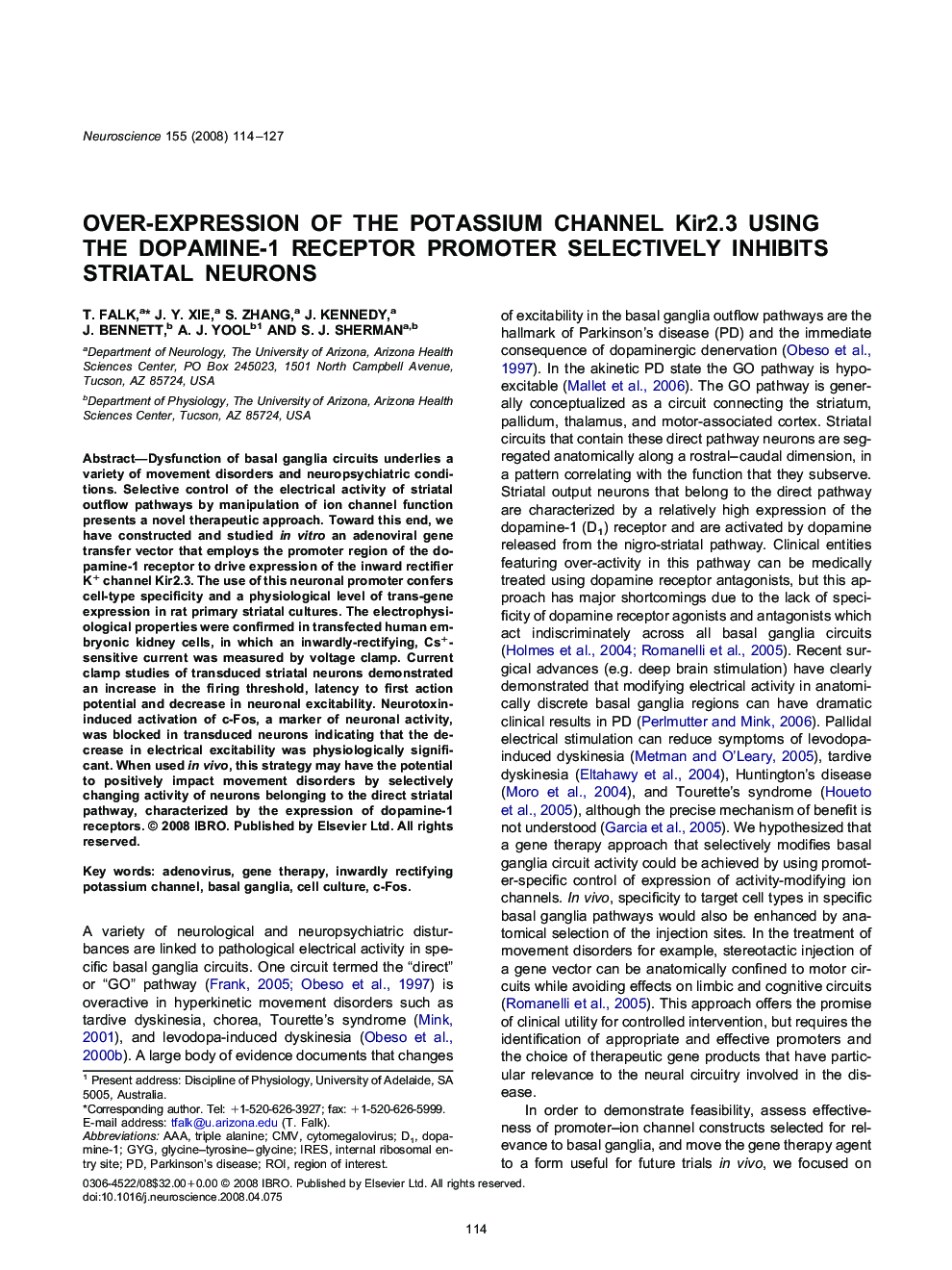| Article ID | Journal | Published Year | Pages | File Type |
|---|---|---|---|---|
| 4340483 | Neuroscience | 2008 | 14 Pages |
Dysfunction of basal ganglia circuits underlies a variety of movement disorders and neuropsychiatric conditions. Selective control of the electrical activity of striatal outflow pathways by manipulation of ion channel function presents a novel therapeutic approach. Toward this end, we have constructed and studied in vitro an adenoviral gene transfer vector that employs the promoter region of the dopamine-1 receptor to drive expression of the inward rectifier K+ channel Kir2.3. The use of this neuronal promoter confers cell-type specificity and a physiological level of trans-gene expression in rat primary striatal cultures. The electrophysiological properties were confirmed in transfected human embryonic kidney cells, in which an inwardly-rectifying, Cs+-sensitive current was measured by voltage clamp. Current clamp studies of transduced striatal neurons demonstrated an increase in the firing threshold, latency to first action potential and decrease in neuronal excitability. Neurotoxin-induced activation of c-Fos, a marker of neuronal activity, was blocked in transduced neurons indicating that the decrease in electrical excitability was physiologically significant. When used in vivo, this strategy may have the potential to positively impact movement disorders by selectively changing activity of neurons belonging to the direct striatal pathway, characterized by the expression of dopamine-1 receptors.
